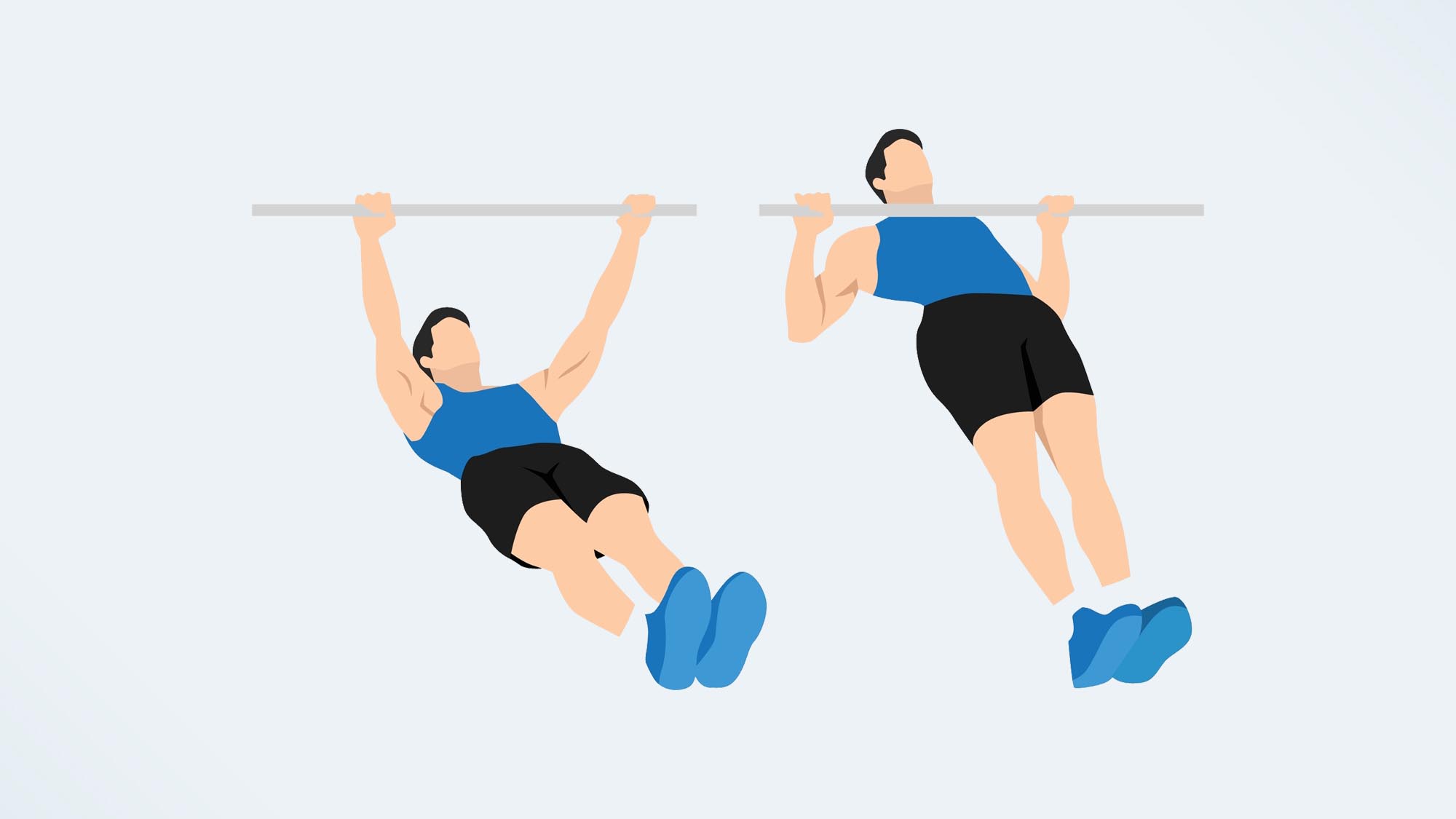Sign up to HELLO Daily! for the best royal, celebrity and lifestyle coverage
By entering your details, you are agreeing to HELLO! Magazine User Data Protection Policy. You can unsubscribe at any time. For more information, please click here.

Personal trainer Lavina Mehta is on a mission to get the nation moving. Awarded an MBE in 2020 for her services to health and fitness, the 46-year-old coach is known for the workout videos she hosts on YouTube with her mother-in-law Nishaben, as well launching the ‘Get UK Asians Fit’ campaign.
Now she’s released her debut book, The Feel Good Fix, in which she shares her personal toolkit of food hacks, workouts and wellness exercises, all designed to boost fitness and mood in the menopause years and beyond. “I want people to start moving, whatever their age. It’s never too late to start,” she tells HELLO!. “But midlife is the time that we really need to focus and invest in our health for our long-term wellbeing and future.”
The mum of three talks to HELLO! about her guide to exercise snacking and how she’s helping to break the stigmas around women’s health.
“Growing up, I wasn’t into fitness – there isn’t enough awareness about the power of exercise for South Asian women. But 16 years ago, I gave up my job to become a mum and after losing my father-in-law very suddenly to a brain tumour and having some health scares of my own, I started to rethink my health.
“I joined the gym – I had put on so much weight, it was getting unhealthy, although it’s not about how we look, more how we feel and the magic of exercise. I invested in a personal trainer, who was a specialist in strength training, and lifting weights transformed my body and mental health. My slogan, ‘Exercise for sanity, not vanity’, got me through some of the hardest challenges.
“I qualified as a personal trainer and started training my friends in my home basement. Then, in 2019, I kicked off a national campaign because I was so alarmed about statistics around UK Asians being so physically inactive and the higher risks of diabetes and heart disease. The rest is history.”
“From my own experience and the menopause revolution. Also, so many of us are busy, juggling home, work and family pressures alongside the symptoms of menopause.
“This feel-good toolkit works for me and so many other women I’ve trained. It helps remove the barriers people have around exercise. The Government guidelines around physical activity can be really daunting, so this is a bit more approachable, flexible and sustainable. Hopefully it’s going to give a lot of people the confidence they’ve been lacking.”
“It’s short, bite-sized amounts of movement that you can do throughout the day, and the book has snacks that range from one minute to three, five and ten. Studies show that 11 minutes of daily exercise can substantially reduce a person’s risk of early death and heart disease, and science shows us that even a minute counts and that exercise snacking can be as effective, if not more, than the hour-long workout that we can’t fit into our busy lifestyles.
“I am very passionate about disease risk reduction, especially diabetes, dementia, osteoporosis, cancers and heart disease. Exercise snacking is so good at helping with metabolic health and maintaining a healthy weight, which reduces the risk of chronic diseases.
“Little and often is the best way to fit it in. You can piggyback these snacks onto your existing lifestyle, like brushing your teeth on one leg or doing a strength snack while the kettle’s boiling and a shoulder-floss snack at your desk.”
“You’re not going to bulk up – let’s stop that myth straight away. Strength training is crucial for our health because we lose muscle mass and bone density from around the age of 30 and it’s accelerated through perimenopause, menopause and beyond, which can lead to osteoporosis. It’s important for our bone, brain, heart, muscle and mental health. Start off small, even with simple bodyweight exercises, and increase your weights gradually over time.”
“Squats are the king of lower-body exercises, and for energising your body, there’s one called the Superbrain Snack. It’s a holistic technique where you squat, cross your arms and connect your tongue to the roof of your mouth, and then clasp your earlobes with the opposite thumb and forefinger. Inhale deeply and lower into a squat. Repeat for 2-3 minutes or ten to 21 reps. This stimulates acupressure points on your earlobes and sends signals to the brain, boosting your cognitive clarity.”
“On my 40th birthday, I noticed I was getting erratic periods, but like a lot of women, you suppress it and think: ‘It’s because I’m busy, stressed and there’s a lot going on.’ My family were getting frustrated with me, saying: ‘I’ve told you that before, Mum, you’re forgetting everything.’ My grandmother had Alzheimer’s and when I started forgetting people’s names or what I was doing at certain times, I was really worried it was early onset dementia.
“During the pandemic, I had symptoms like numbness in my hands during the night, rosacea suddenly appeared and anxiety, but I never joined the dots. It was only when I watched Davina McCall’s documentary Sex, Myths & the Menopause two years ago, and saw the changes in the brain, the penny dropped that I was going through perimenopause.”
“As a South Asian woman, there are so many taboo subjects around women’s health – periods and sex, let alone menopause. But South Asian women can go through menopause five or six years earlier than the average white female and perimenopause can be a decade before that. Women in their late 30s need to be aware, stay in tune with their bodies and log symptoms. Be prepared, not scared. Start normalising the conversation.
“I openly share my own experiences, but I’m also a patron for Menopause Mandate. It’s important to educate and empower ourselves with knowledge, and to advocate for yourself.”
RELATED: 10 best menopause supplements with top reviews to have on your radar – plus expert tips
“The power of lifestyle changes and exercise. I wish I had started earlier, but it’s never too late, no matter what age you are. I’ve seen that with the free workouts I do for the elderly every week with my mother-in-law.”
The Feel Good Fix by Lavina Mehta (Penguin, £18.99) is available now.


I love pull-ups because they are the epitome of a challenging bodyweight compound exercise, meaning they target multiple muscle groups and joints simultaneously. If you can do them with just your own weight, great, but they are also endlessly scalable using one of the best resistance bands.
Don’t worry if you can’t do pull-ups yet, or you’re just looking for another way to build your back and biceps. All you need to start with is to improve foundational upper-body strength. And you can achieve this using a bodyweight exercise that targets the same muscle groups, but with a horizontal pulling motion rather than a vertical one.
Here’s how to do the bodyweight row and why I recommend it as a pull-up alternative. Plus, these are the benefits of building strength in your back and biceps.
Pull-ups are a bodyweight strength exercise, and many gym-goers see them as the gold standard for natural upper-body strength. But there are functional training benefits as well, like being able to pull your own bodyweight upward. That translates to situations like climbing or pulling yourself out of water.
The exercise mainly strengthens your upper body muscles, like your biceps, shoulders and back. It also improves forearm and grip strength and requires your core for stabilization. Of the back muscles, these include the latissimus dorsi, teres major, posterior deltoids and mid to lower traps, plus a little emphasis on the pectoralis major, depending on your grip (palms toward you, which is a chin-up).
It’s worth learning the difference between pull-ups versus chin-ups; most people find chin-ups easier, and it’ll work your biceps and pecs slightly differently.
It depends entirely on your experience with exercise and, to some degree, how you’re built. I’ve found that even without much practice, I’ve always been able to maintain a couple of pull-ups unaided, and that is in part because I have high levels of relative strength. Think of a gymnast; these people have high relative strength, which means they are strong compared to their body size.
You might also find pull-ups fairly easy if you’ve developed the relevant muscle groups through other means of exercise or sports. For most of us, it takes time to build the strength and skill to perform them.
There are a few movements that will help you get there, and these include inverted rows or Australian pull-ups. I would aim to get strong at these before moving to pull-ups with a resistance band, because I’ve always been taught it’s usually better to work at strengthening your muscles first with your bodyweight and learning the correct movement patterns before relying on other means.
One bodyweight exercise I love is the bodyweight ring row; you can switch rings for TRX or suspension trainers. It builds foundational strength before you head to the bar, and improves stability and coordination.

The bodyweight ring row is a pulling exercise that can improve gymnastic skills and help with pulling power, strengthening your back and biceps like a pull-up does.
How:
There are plenty of variables to play around with to make this exercise harder or easier. Stepping your feet further away will make the exercise more challenging, whereas walking your feet closer to a standing position will make it easier. A neutral grip creates a narrower position, whereas an overhand grip creates a wider movement pattern and closely mimics a standard pull-up.
Gymnastics rings are fantastic at freeing up your range of motion, challenging balance, stability and coordination without the rigidity of bars. Suspension trainers are similar in this way, and you can adjust the height of the rings and suspension handles to suit your exercise.
The most well-known suspension training brand is TRX, and you can pick up options for home gyms with adjustable straps, a door anchor and combined foot cradles and handles.
Take your time practicing the full range of motion and moving with control as you lower your body weight every rep, utilizing time under tension — keeping muscles contracted for longer. I recommend aiming for 8-12 reps and 3-4 sets, gradually increasing the difficulty by adjusting the height of the handles or your body.
As master Hyrox trainer, Jake Dearden, explained to my fellow writer when she was learning to do a first pull-up: “There’s merit in building strength in the muscles individually, but it is better to train them simultaneously.” The main reason is that you’re training muscles to recruit together the way they would during the pull-up itself.
Barbell bent-over rows, seated rows, assisted pull-ups and other multi-muscle pulling exercises will help you develop the prerequisite strength to pull your own body weight over the bar. But that doesn’t mean that isolation exercises like biceps curls don’t have a place in your workouts; we just recommend prioritizing compound exercises.
Back to Dumbbells

NorthStar launches Autonomy v2, a cloud-based system for science-driven fitness and business growth.
Irvine, California – November 02, 2025 – NorthStar Advanced Exercise Science has announced the expansion of its Autonomy v2 licensing model, introducing a comprehensive framework for chiropractic and wellness centers seeking to integrate premium fitness services into their practice. The new release includes a Business Handbook and an Intuitive Revenue Worksheet, designed to guide professionals through every phase of licensing and implementation.
Autonomy v2, NorthStar’s flagship cloud-based exercise science system, combines research-driven programming with an adaptable business model that aligns with clinical operations. Using Google Drive and Google Docs for secure program distribution allows wellness centers to deliver structured, science-based strength and conditioning programs without the overhead or complexity of traditional fitness management platforms.
“The new licensing materials make the transition simple and transparent,” said Vanessa Rowe, Sales Director at NorthStar Advanced Exercise Science. “Chiropractors and wellness professionals can now evaluate projected revenue, understand program structure, and begin integrating Autonomy v2 into their service offerings within days.”
The Autonomy v2 Business Handbook outlines operational procedures, revenue structures, and client-facing program models that enable wellness facilities to expand their services while maintaining compliance and clinical credibility. The Business Revenue Worksheet gives potential licensees a clear view of financial potential by mapping out realistic conversion rates, pricing tiers, and scalability options.
Built on advanced exercise science, Autonomy v2 features proprietary sequencing and pathway-based training models derived from NorthStar’s research in adaptive kinesiology and exercise physiology. Each program is delivered with detailed session manuals and integrated progression systems, providing an intelligent blend of autonomy and professional oversight.
For wellness businesses, the system presents an immediate opportunity to add a new premium revenue stream by offering scientifically validated fitness services directly through their practice. The licensing model is structured to support both single-facility operations and multi-location scalability, with NorthStar providing complete digital setup and support via its cloud infrastructure.
NorthStar continues to expand its ecosystem of professional resources through its digital platforms, ensuring licensees have access to up-to-date documentation, analytics, and consult support. Interested wellness professionals can learn more or begin the licensing process by visiting
www.autonomyv2.com or www.northstar-central.com
About NorthStar Advanced Exercise Science
NorthStar Advanced Exercise Science (NorthStar AES) develops cloud-based fitness and wellness systems that merge physiology, biomechanics, and data analytics into scalable, research-driven programming. Through its flagship platform Autonomy v2, NorthStar equips gyms, chiropractic offices, and wellness centers with advanced exercise science solutions designed to elevate service quality and revenue potential.
For additional information or media inquiries, please contact:
Marketing and Communications Department
George Pierce george@northstar-central.com
www.northstar-central.com | www.autonomyv2.com
Press Contact
Name: George Pierce
Title: Director of Marketing & Communications
Company: NorthStar Advanced Exercise Science, LLC
Email: george@northstar-central.com
Phone: (800) 878-9438 ext. 6
Company Address
NorthStar Advanced Exercise Science, LLC
4000 Barranca Parkway, Suite 250
Irvine, CA 92604
Main: (800) 878-9438
SMS/MMS: (949) 687-1297
NorthStar Advanced Exercise Science (NorthStar AES) develops cloud-based exercise science systems that combine physiology, biomechanics, and data analytics to create structured, scalable fitness solutions. The company’s flagship platform, Autonomy v2, provides wellness and chiropractic professionals with a premium, research-driven fitness system that integrates seamlessly into existing clinical operations.
Headquartered in Irvine, California, NorthStar AES supports gyms, wellness centers, and healthcare providers throughout the United States by delivering advanced programming, licensing support, and digital infrastructure via its Google Cloud-based network.
Learn more at www.northstar-central.com and www.autonomyv2.com
This release was published on openPR.

While you’ve been biding your time at the gym, has the real health been hiding in throwing some balls through the hoops? Basketball is one of the few sports that combine speed, agility and strategy in a play that has garnered it roughly 2.2 billion fans and more than 600 million active players worldwide. The game involves an impressive interplay of physical and mental health, is widely accessible and promotes healthy physical activity for people of all ages and abilities.
Here’s how experts state it can be the ideal full-body exercise you need.
Every sports activity is healthy and fun for the body. Basketball in particular is a moderate to vigorous intensity contact sport that has high levels of aerobic activity. “It has many proven heart-health benefits brought about by improving cardiorespiratory fitness and lowering risk of adverse cardiovascular diseases such as strokes,” said Dr Chantal Nguyen, chief resident at Stanford Medicine’s Physical Medicine and Rehabilitation Clinic to USA TODAY.Additionally, it also improves cholesterol, triglyceride and blood-sugar profiles along with being an excellent fat burner. Its high intensity can help in burning a lot of calories and fat. With a variety of movements such as jogging, springing, jumping, dribbling and more, the sport engages numerous muscles in the body, thus toning all of them. These include the core, lower back, glutes, quadriceps, hamstrings, hip flexors and calves. A 2022 study published in Springer Nature, mentioned “feeling of the ball” as a complex of specialised perception associated with musculoskeletal, vestibular, visual, and tactile sensations, making it the highest manifestation of coordination abilities. The study explained how the physical movements required in the game improve bone health, and are an exemplary full-body workout. Playing the game works the deltoids, traps, lower back, upper back and core as well as the shoulder joints. It also trains players in two important skills: balance and coordination and hand-eye coordination.
With the amount of rapid strategy and quick movements that the sport demands, basketball is a game that needs you to be quick on your feet and mind all the time. Thus, its team-based nature also elevates mental and social health along with improving mood and connectivity.With the requirement of a team, people learn to open up in communication, leadership and more, helping develop a variety of vital life skills. A 2025 study published in Schizophrenia Bulletin, stated that basketball physical training effectively alleviated psychological anxiety in college students. The above-mentioned Springer study also stated that the sport helps in developing decision-making and increases self-confidence and self-esteem and can be a powerful game for young people who are depressed, teaching them, confidence, empathy and team-building skills.
Basketball is a sport played between two teams of five players on a court with a hoop on both ends. The points are scored by shooting the ball through the opponent’s basket, while preventing the other team from doing the same.What’s important to note, is that the sport also comes with its own injuries. The most common are injuries in the joints such as ankles and knees. Sprains, ACL tears and finger injuries are also common.Note: The information provided in this article is for educational purposes only and is not intended as medical advice. Always consult with a healthcare professional before starting any new medication or treatment.


Longtime anchor Shannon Sims is leaving Milwaukee’s WTMJ-TV (Channel 4)


With food stamps set to dry up Nov. 1, SNAP recipients say they fear what’s next


How did former Alabama basketball star Mark Sears do in NBA debut with Milwaukee Bucks?


1 dead, 6 injured in shooting at Lincoln University homecoming festivities


Video: Tyler Mitchell Breaks Down Three Photos From His New Book


Dia De Los Muertos Austin: Parades, Altars & Events


ESPN scoop adds another intriguing name to Seahawks chatter before NFL trade deadline


Video: Dissecting Three Stephen King Adaptations